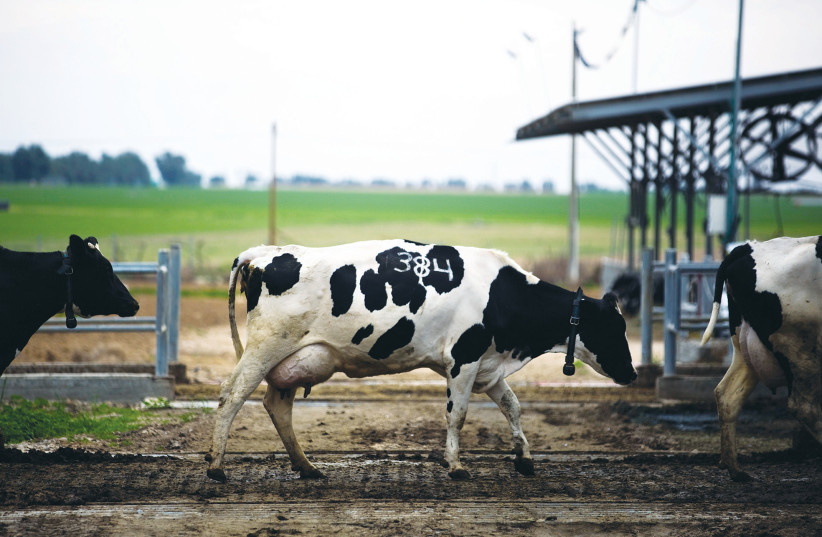Significant amounts of methane – one of the major greenhouse gases – are located in sediment under the permafrost surrounding the Arctic Circle. Permafrost is a supposedly enduring frozen layer on or under the Earth’s surface, consisting of soil, gravel and sand, usually bound together by ice. Found both on land and below the ocean floor, it usually remains at or below 0°C (32°F).
However, global warming has caused some of the permafrost to thaw and form lakes that are now “hot spots” for methane release into the atmosphere, which heats it up even more.
Scientists at Ben-Gurion University (BGU) of the Negev in Beersheba have now estimated just how much methane is produced and released by these lakes and what the production mechanisms are. This information can be used in climate global warming models.
Methane, which has the chemical formula CH4, is the simplest alkane – a family of organic compounds that consist entirely of single-bonded carbon and hydrogen atoms and lack any other functional groups. Methane is the main constituent of natural gas. The relative abundance of methane on Earth makes it an economically attractive fuel, but capturing and storing it poses technical challenges due to its gaseous state under normal conditions of temperature and pressure.
Naturally occurring methane is found both below ground and under the seafloor and is formed by both geological and biological processes. The largest reservoir of methane is under the seafloor.

When methane reaches the surface and the atmosphere, it is known as atmospheric methane, which has increased by about 150% since 1750 and especially in recent decades, apparently due to human activities. It accounts for a fifth of all the long-lived and globally mixed greenhouse gases. It has also been detected on other planets, including Mars, which has implications for astrobiology research.
Methane is an odorless gas and appears to be colorless. The familiar rotten-egg smell of natural gas as used in homes is achieved by the addition of an odorant as a safety measure, usually blends containing tert-butylthiol.
Prof. Orit Sivan and members of her lab – Efrat Russak, Andre Pellerin, Yarden Gerera and Noam Lotem – returned recently from another field campaign. There they sampled several actively expanding thermokarst lakes in central Alaska, where the methane is released from the thawing permafrost into the water and the atmosphere.
What exactly is Thermokarst?
THERMOKARST IS a type of terrain characterized by very irregular surfaces of marshy hollows and small hummocks formed as permafrost thaws that are rich in ice. This land-surface type occurs in Arctic areas and on a smaller scale in mountainous areas such as the Himalayas and the Swiss Alps.
These pitted surfaces resemble clusters of small lakes formed by dissolution of limestone in some karst areas, which is how they came to have “karst” attached to their name, even though no limestone is actually present.
Small domes that form on the surface due to frost heaving with the onset of winter are only temporary features. They collapse during the following summer thaw, leaving a small surface depression.
Some ice lenses grow and form larger surface hummocks that can last for many years and are sometimes covered with grass and sedge (plants with triangular stems and inconspicuous flowers that typically grow in wet ground) until they begin to thaw. These domed surfaces eventually collapse – either annually or after longer periods – forming depressions that become part of the uneven terrain included under the general category of thermokarst.
Sivan’s team published an article about their findings based on a previous sampling campaign recently in the prestigious peer-reviewed journal Global Change Biology under the title “Methane production controls in a young thermokarst lake formed by abrupt permafrost thaw.”
They presented measurements of CH4 production and cycling in Big Trail Lake, a young, actively expanding thermokarst region of rapidly degrading permafrost located in central Alaska.
Thawing permafrost causes previously frozen organic matter to be available for microbial degradation and emits additional greenhouse gases. On a global scale, this may worsen global warming, in particular with regard to methane emissions.
Increasingly, the abrupt thawing of large volumes of ice-rich permafrost may be augmenting Arctic CH4 emissions. To anticipate future such emissions, the authors felt it was necessary to understand processes that act at local scales to constrain CH4 production and emissions.
